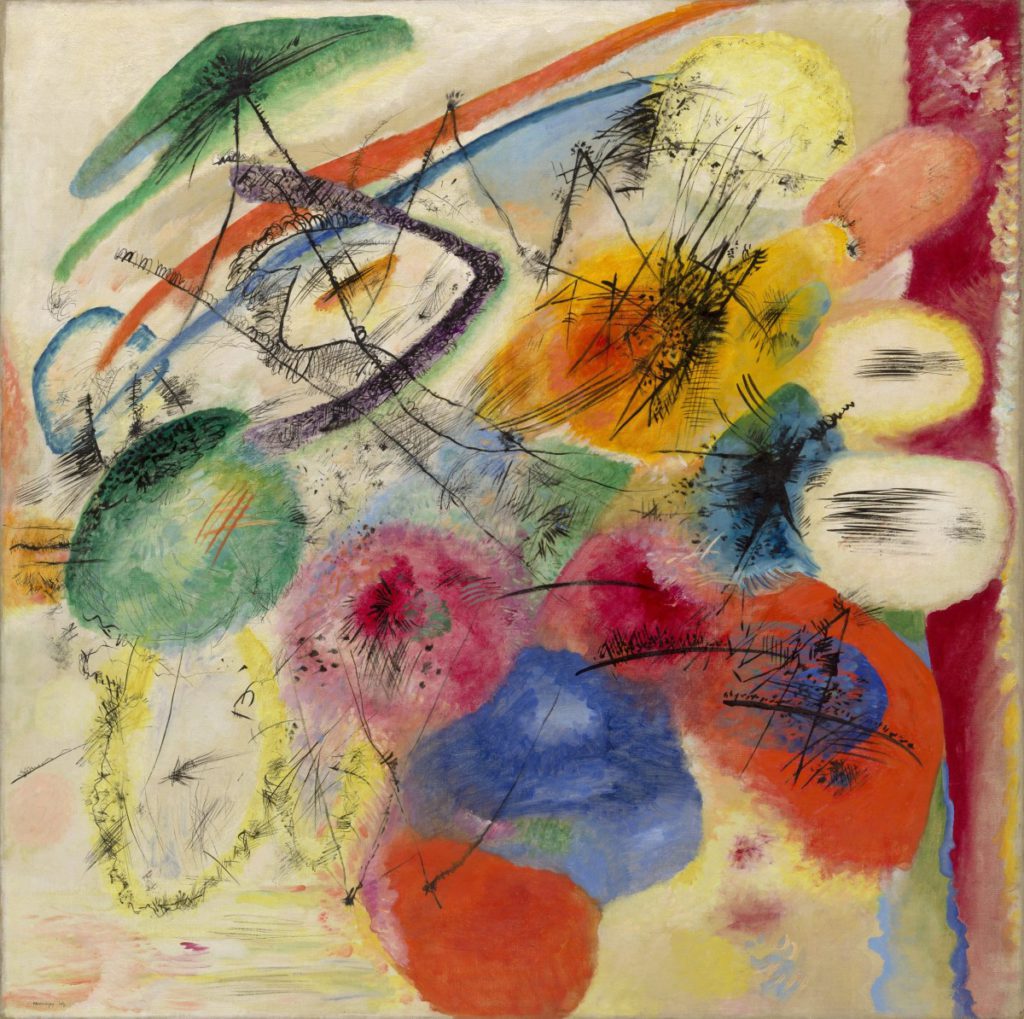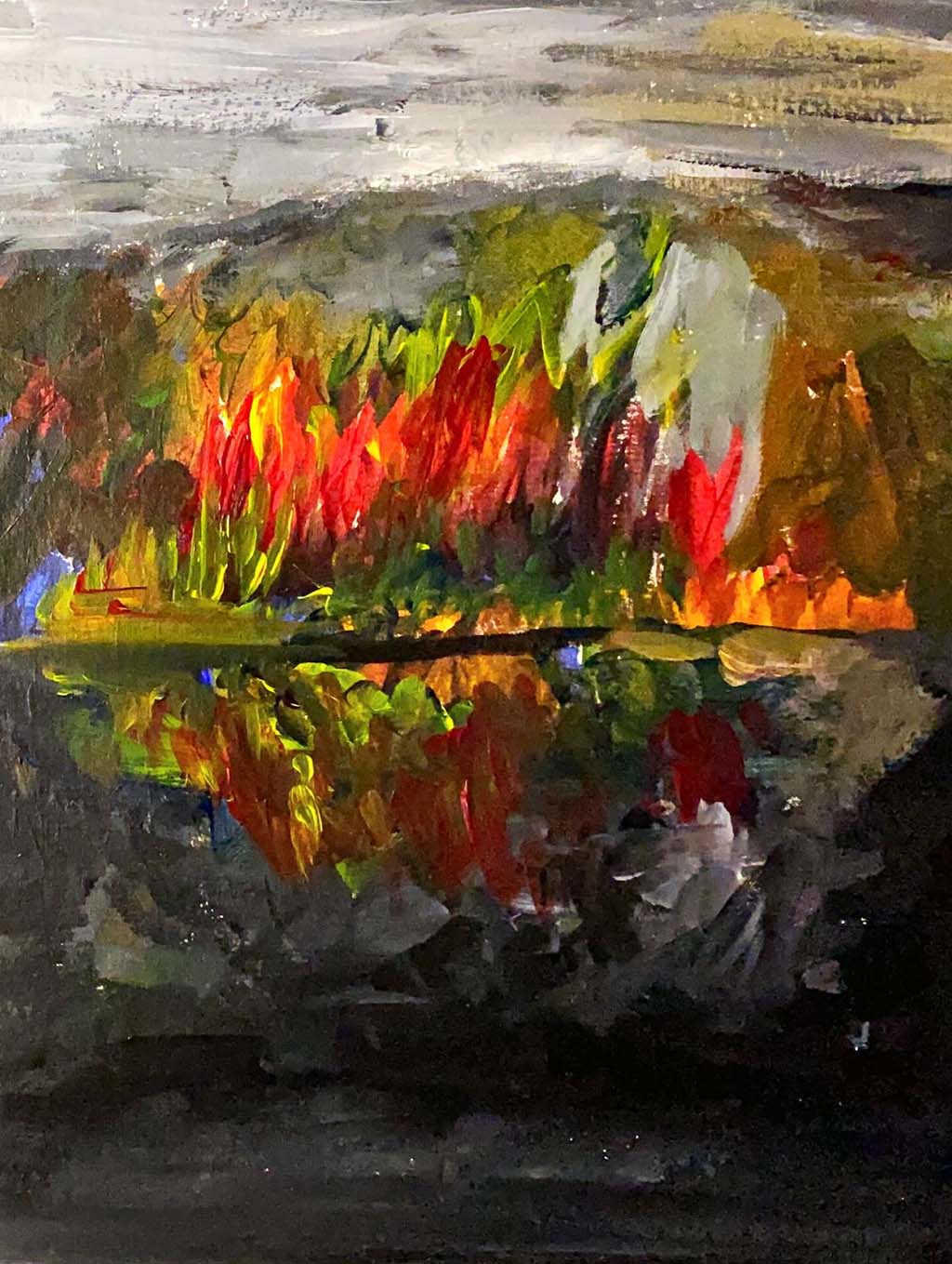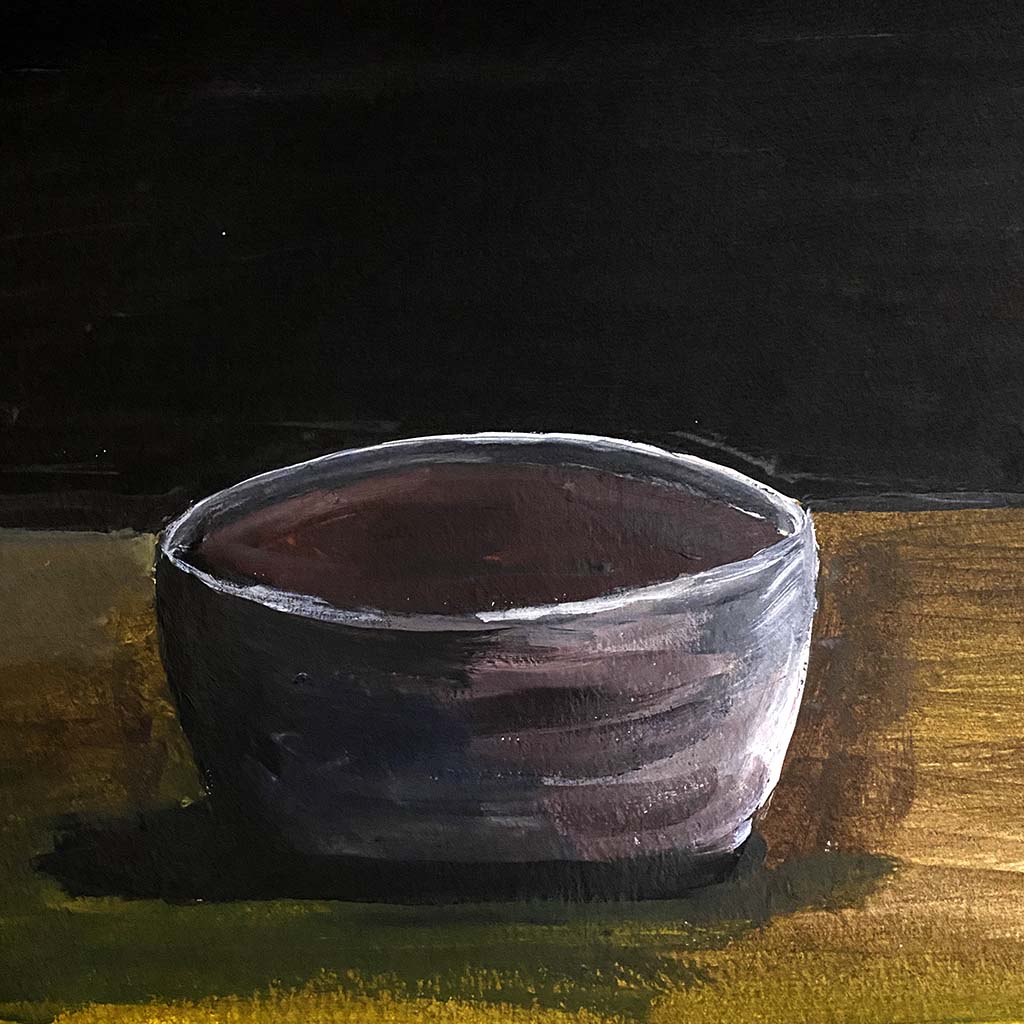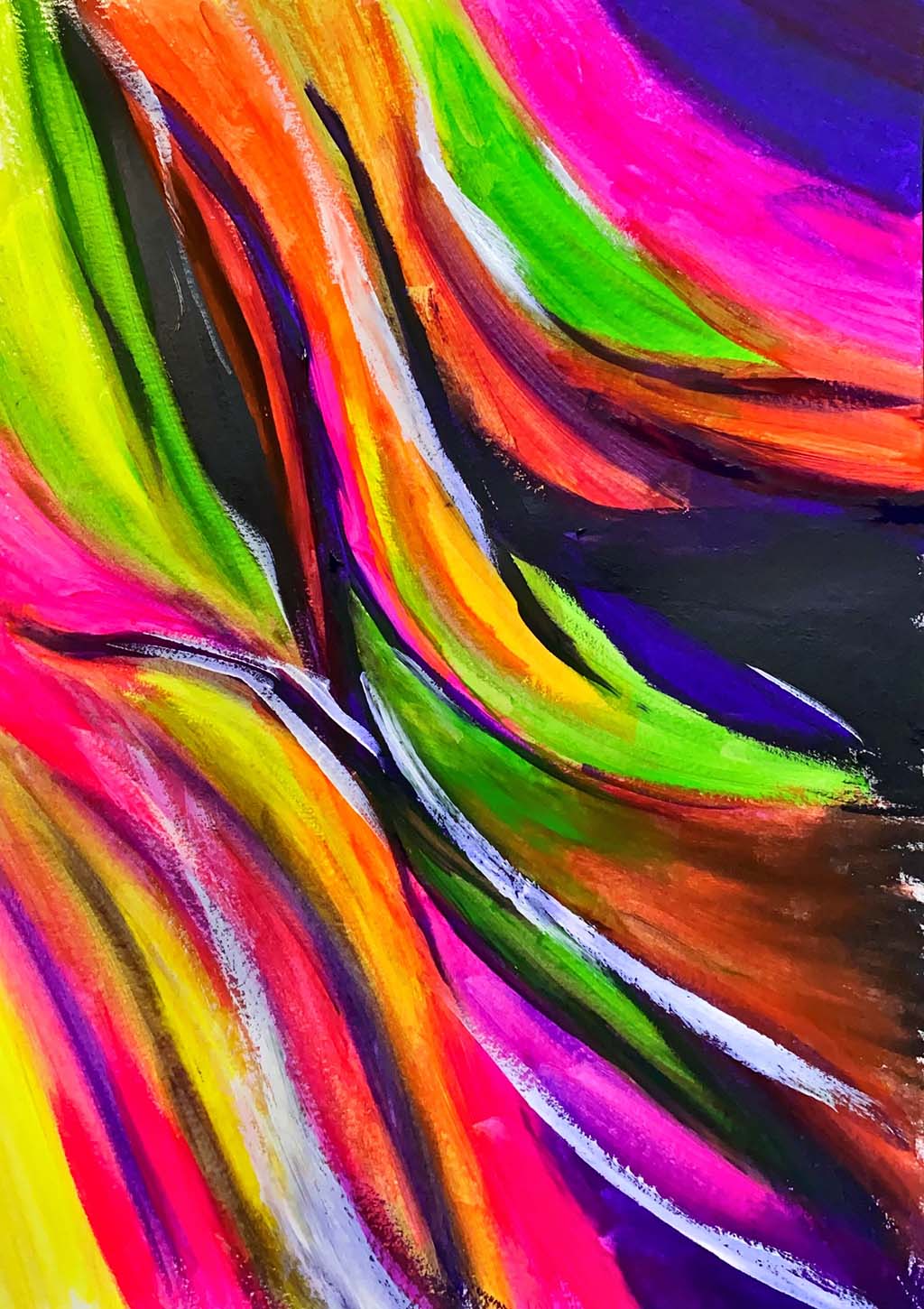Summary
Music and the visual arts are, typically, both compositional disciplines. Music uses repetition, and visual art uses primitives and other recognisable shapes, in a similar way: to act as a starting point for variation.
In this module, I chose to explore the effects of repetitive and rhythmic music on my own mental state, as illustrated through the production of art pieces created while listening to various pieces.
Embodiment
The main paper I chose to work with is “Visual culture and an aesthetics of embodiment” by Paul Duncum, University of Illinois.
The paper is focussed principally on proprioception (body awareness).
I am concerned with proprioception; that is, ‘our sense of being in a body and orientated in space’
Duncum, Paul. ‘Visual Culture and an Aesthetics of Embodiment’. International Journal of Education Through Art, vol. 1, no. 1, Apr. 2005, pp. 9–20. IngentaConnect, https://doi.org/10.1386/etar.1.1.9/1.
Mind / Body dualism
Duncum makes reference to a traditional philosophical view that the mind and body are seperate and distinct. Although I did read extensively on this, it’s something I’d like to come back to and it’s not the focus of this paper.
Body / Out-of Body
When analysing Duncum’s paper, I became interested in the opposite of embodiment, i.e. the concept of being “out of body” or in another state of thinking, for example, a state of “Flow”, where one is fully immersed in an activity, energised, enjoying the process.
To me, these two things are inextricably linked – if you can have a sense of being in a body, then you must understand what it is that is being embodied – your consciousness – and likewise must also have a sense of what it is to be out of one’s body, or where one’s mind is experiencing an autotelic or heightened state.
This led me to read more about how human cultures throughout history have sought insights into the nature of the world, using various tools and techniques to change or enhance their mental state, to obtain “out of body” experiences.
Music – particularly repetitive, rhythmic music – has been used all over the world as one of those aids to those seeking to alter their mental state.
Music’s effects on perception
As an example, rhythmic chanting in a spiritual context has emerged in disparate cultures, and is now regarded as an almost universal human activity:
In many traditions, chanting is used to induce mystical states, an altered state of consciousness characterised by a profound sense of peace.
Perry, G.; Polito, V.; Thompson,W.F. Rhythmic Chanting and Mystical States across Traditions. Brain Sci. 2021, 11, 101. https://doi.org/10.3390/brainsci11010101
The reasons why chanting induces this effect are complex and not yet fully understood, but likely connected to attention, repetition, synchrony, rhythm, and belief – working both individually and together.
This led to a question: could I affect my own perceptions and mental state using music, and would the effects of this be something that I could use as a tool in my art practice?
As an atheist and with limited time to experiment, I chose not to focus on chanting practices, and instead looked at a smaller number of parameters:
One way of inducing an altered state is by increasing the intensity and variability of sensory input
Perry, G.; Polito, V.; Thompson,W.F. Rhythmic Chanting and Mystical States across Traditions. Brain Sci. 2021, 11, 101. https://doi.org/10.3390/brainsci11010101
I also read an article on the Centre for Sensory Studies website about the Burning Man festival and rave culture (my highlight):
Rave attendees often undergo sleep deprivation and fasting along with the consumption of hallucinogenic drugs and dancing for long hours to repetitive music to achieve this immediatism.
Burning Man: Transforming Community through Countercultural Ritual Process. http://centreforsensorystudies.org/burning-man-transforming-community-through-countercultural-ritual-process/. Accessed 30 Oct. 2022.
This reinforced that there may be something worth exploring, and indeed there is certainly evidence that music alone directly affects visual perception:
Our results show that our conscious experience of the world may be less objective than we think. Conscious experience does not only reflect ‘what is out there’, but also our previous knowledge and expectation. Our findings show that mood, as induced by music, is also reflected in visual awareness, both in biasing processing sensory input, as in the generation of conscious visual percepts in absence of structured visual input. In other words, the music you are listening to might directly alter the way you perceive the world.
Jolij, Jacob, and Maaike Meurs. ‘Music Alters Visual Perception’. PLOS ONE, vol. 6, no. 4, Apr. 2011, p. e18861. PLoS Journals, https://doi.org/10.1371/journal.pone.0018861.
If it’s possible to affect perception, then it’s worth considering how selected music could affect one’s perceptions as an artist, and how that might affect the creation of visual art pieces.
Kandinsky
In further research, I encountered the work of Vasily Kandinsky (1866-1944). I had heard his name before, but had not really looked into his practice, nor understood the strength of influence that music had on his work.
Kandinsky was a Russian artist who visualised music in a series of abstract visual works.

Colour directly influences the soul. Colour is the keyboard, the hammers are the eyes, the soul is the piano with many strings. The artist is the hand that plays, touching one key
Kandinsky Wassily and Michael Sadleir. Concerning the Spiritual in Art. [New ed. ] ed. Tate 2006
or another purposively, to cause vibrations in the soul.
Kandinsky’s work is also something I would like to come back to and research further. For the purposes of this module, a I did not intend to create works that interpreted pieces of music; instead, I was more interested in how music and sound could be used as a tool in visual art practice.
Creative Work
Based on my research into the effects of music on mental state, I wanted to test if any effect could be seen if I actively listened to different pieces of music as I painted. The type of music I sought out was based on looking at what humans had arrived at through generations of spiritual practices, i.e. rhythmic and repetitive pieces.
…lend your ears to music, open your eyes to painting, and…stop thinking! Just ask yourself whether the work has enabled you to “walk about” into a hitherto unknown world. If the answer is yes, what more do you want?
Kandinsky Wassily and Michael Sadleir. Concerning the Spiritual in Art. [New ed. ] ed. Tate 2006
Experimental Approach
I chose to listen to audio tracks and then to produce some paintings, attempting to be as far as possible be mindful, and engaged in the present.
Parameters
- I listened with headphones to eliminate outside sounds.
- It was important to me to tap into my feelings and mental state.I did not want to illustrate a musical piece; I wanted to represent my own perceptions and feelings about a piece.
- I wanted to work without a reference, in an attempt to connect better with the music, and to avoid being diverted into the production of a representational work.
- In so far as it was possible, in an attempt to reduce external visual stimuli, I worked at night with my painting lit only by a single light, keeping the rest of the room in darkness.
- I listened to each piece of music all the way through once, at the same time selecting colours and setting up my work area.
- I then listened to a few minutes of the piece again with my eyes closed, before then starting to paint with the music still playing.
- I didn’t place a limit on the painting time – because the pieces were of differing lengths, I left each track on repeat.
The works
The pieces I initially chose to listen to were:
- Kailasha, from Trilogy De La Mort, Éliane Radigue. This is an extremely minimal electronic piece comprising soft, pulsing, repetitive tones.
- Riki-Maru, Wadaiko Matsuriza. This is a piece of Japanese Taiko drumming, and consists of very fixed, steady and repetitive beats.
Kailasha
My thoughts became fire, an island, reflections.

Riki-Maru
Why a bowl? Drum-like, or is that too literal? A bowl of blood… drums, Zen, Nihilism. Hmm.

Resolved Piece
Based on my experiments and intermediate works, I chose to work on another piece based on how I felt during the creation of the other two pieces. Although I was perceiving some amount of energy from the music so far, after listening to a lot more music, I decided to up the ante and use a more intense piece.
Strobe
The music I chose for this final piece was:
- Strobe, deadmau5. This is an iconic electronic dance music track from 2009 with good repetition and a strong beat.
Final Work

Overall Reflection
The paintings
I find it interesting that with no real conscious thought, the colour palette of the paintings is quite reflective of the music used. I felt a strong sense of flow in my final piece, and the energy in it is quite tangible. In conclusion, I do feel that music has a place in my practice, and will now build on this as I go forward.
This module
I found this module to be very challenging. The amount of source material provided was large, and the content dense and challenging. It led me to overthink, and I found myself going exploring a multitude of complex pathways that left me feeling adrift and directionless. I went down many rabbit holes, and this is the first module for which I’ve needed to ask for an extension.
Eventually though, I believe I learnt some interesting and useful things about how I think and work, and it will likely lead me to look far more carefully at my working environment. Music can be a powerful influence on my work, and I will need to keep that in mind.
